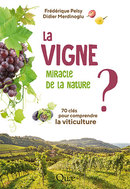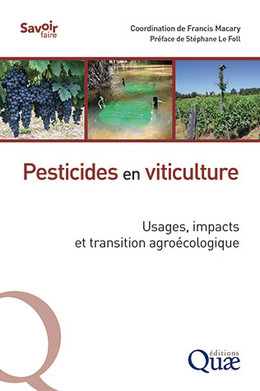Remerciements
Préface
Introduction générale Des évolutions climatiques inquiétantes
Le projet Laccave : une approche systémique et participative de l’adaptation
Les productions majeures du projet Laccave
Conclusion
PARTIE 1 : De l’évaluation des impacts à l’étude des leviers d’adaptation
1. Des indicateurs et des modèles pour étudier les impacts du changement climatique sur la vigne
I. García de Cortázar-Atauri, M. Launay et R. Le Roux
2. Les sols viticoles face au changement climatique
S. Follain, É. Fayolle et A. Quiquerez
3. Effets de l’élévation des températures et du déficit hydrique sur la vigne
C. Van Leeuwen, T. Simonneau et C. Delmas
4. Les impacts sur la qualité du vin
C. Thibon, A. Roland, P. Darriet, P.-L. Teissèdre, M. Jourdes et A. Pons
5. Idéotypes de vigne pour l’adaptation au changement climatique
É. Duchêne, É. Marguerit et A. Coupel-Ledru
6. Modes de conduite et gestion des sols
A. Métay, R. Métral, C. Gaviglio et C. Van Leeuwen
7. La gestion de l’eau
T. Simonneau, C. Van Leeuwen, G. Coulouma, N. Saurin,I. La Jeunesse et N. Ollat
8. Les solutions oenologiques : adapter la vinification
P. Darriet, J. Roch Mouret, J.-M. Sablayrolles et A. Samson
9. La variabilité climatique à l’échelle du territoire comme levier d’adaptation
B. Bois, H. Quénol et E. Neethling
PARTIE 2 : Coconstruire des stratégies pour l’adaptation
1. Perception du changement climatique et adaptation des viticulteurs
E. Neethling et J. Boyer
2. Le marché est-il preneur de vins marqués par le réchauffement climatique ?
É. Giraud-Héraud, A. Fuentes Espinoza, A. Pons, S.Tempère et S. Pérès
3. Construire des « écosystèmes d’adaptation » pour accompagner la viticulture française
J. Boyer et J.-M. Touzard
4. La construction des connaissances pour la formation
H. Hannin, L. de Rességuier, L. David, M. Nougier, J.-M.Touzard, F. Levrault, C. Renaud-Gentié et C. Isambert
5. Faire émerger l’action climatique à l’échelle locale : l’exemple des climathons viticoles
N. Graveline, M. Nougier et J.-M. Touzard
6. Les modèles au service d’une démarche participative de construction de stratégies d’adaptation locales
A. Naulleau, L.Hossard, C. Gary et L. Prévot
7. Prospective participative et stratégie nationale
F. Brugière, P. Aigrain, B. Bois, É. Duchêne, I. García de Cortázar-Atauri, J. Gautier, É. Giraud-Héraud, H. Hannin, J.-M. Touzardet N. Ollat
Conclusion généraleLa coconstruction de messages clés pour les acteurs de la filière
Vers une cogestion adaptative des vignobles, à plusieurs échelles
L’expérience d’une recherche transdisciplinaire, transformative et médiatique
Bibliographie
Liste des auteurs





















